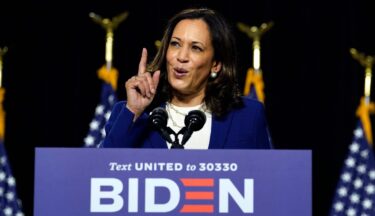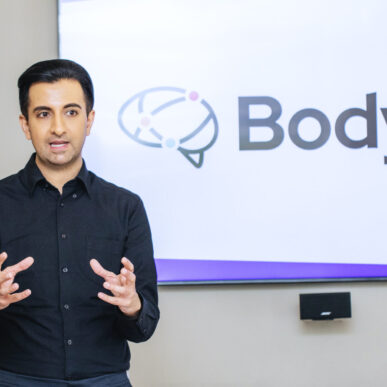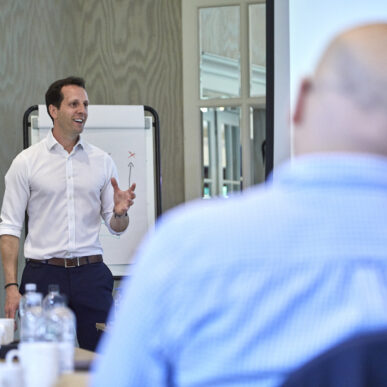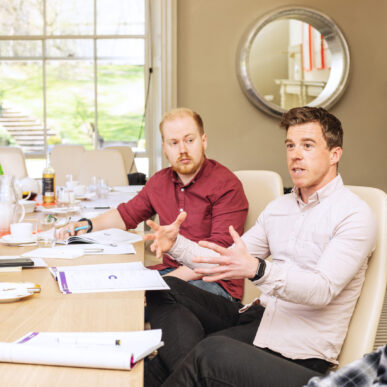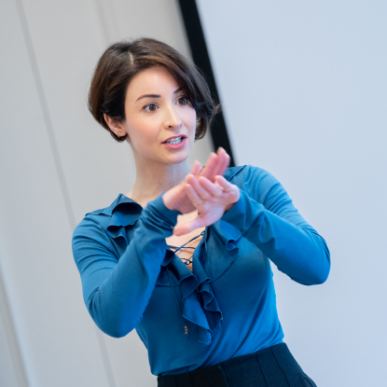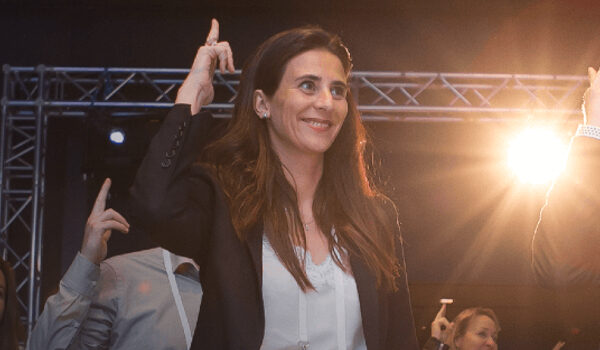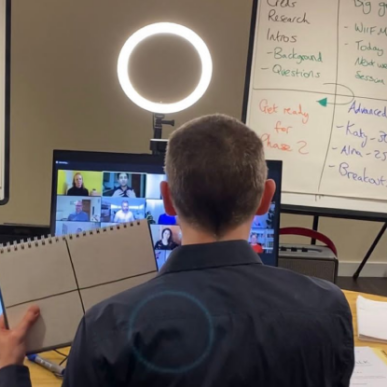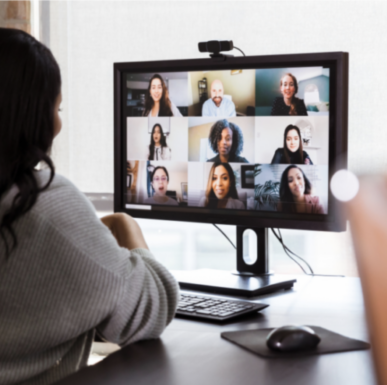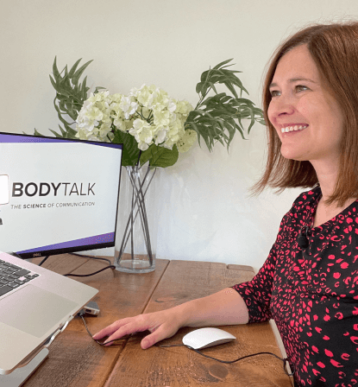“She built up her own credibility by first sharing personal stories”
Why was Kamala Harris’ debut campaign speech a success?
I’ve lost track of the amount of times I’ve been sat in the studio waiting to go on air across the past few years – only to be told by the TV gallery in my ear, seconds before I’m live, “sorry they’re not coming to you next – the President’s about to speak!” (Or the other favourite… you’ve started the programme, told the audience what’s “coming up,” and just as you’re full swing into the top story you hear the shout “quick hand to Washington, hand to Washington, he’s coming out!” No single person has driven the global news agenda in recent years quite like Donald Trump has.
Even when I was working as a news presenter for the Indian broadcaster Zee TV – the liveliest set of political debates I ever hosted was during the US mid-term elections in 2018. In the section where the audience could interact the phone lines never stopped ringing; such was the eagerness of the viewers to have their say. I remember reporting on President Obama’s first election win when I was starting out as a news journalist, there was huge interest then – but I have to say Trump and his reality show style presidency has taken the global fascination in US politics to another level.
But something slightly different happened last Wednesday, when the President was forced to share the political limelight with somebody from the opposite party. This time when my programme was dropped, it wasn’t because Trump was about to speak in Washington, but because Kamala Harris, alongside Joe Biden, was about to make her campaign trail debut after being named the Democratic vice-presidential nominee. The first Black woman and South Asian American to ever be on a major party’s ticket. A moment of history. I, like so many around the world, sat down to watch.
The main thing I noticed in terms of structure and delivery was she made a really strong start, and it became the foundation of a powerful speech. The reviews for this campaign debut have been largely glowing. Her critics will say the left-leaning media was queueing up to fawn over her, but even Harris’ political opponents and Fox News didn’t have too much to say when it came to criticising the way she delivered her message. And that’s my focus here, the structure and delivery of her speech, not her politics.
‘Black Voters Matter,’ an organisation dedicated to expanding black voter engagement in the US, says it’s seen a surge in the number of people wanting to volunteer since Harris’ speech. Snap polls (which don’t of course mean votes) were favourable afterwards and social media was abuzz with supporters saying they feel hopeful again after hearing her speak. Twitter we know is not the pulse of the nation, but there’s an excitement around Kamala Harris’s campaign debut that I can’t remember Hillary Clinton or Tim Kaine garnering four years ago.
I’ll look at the way she structured her opening in a moment, but first let’s focus on her style. Aside from some masked-up, socially distanced journalists in front of her, Kamala Harris couldn’t see any of the people she had to connect with – the voters. She wasn’t able to feed off a crowd in a huge stadium. Here she was in an almost empty sports hall in Delaware where nobody was going to cheer or clap or engage with a word she said.
How many times have you sat on a Zoom call delivering your message looking expectantly at the person/people you’re speaking to for some kind of reaction as to how you’re doing? As long as even one person has got their video turned on and you can see their eyes it gives you a clue about how you’re doing. Somebody nodding along as you’re speaking, or smiling, can in that moment feel like the most reassuring thing in the world!
Kamala Harris didn’t have that luxury, she had to create her own energy and connect with an audience watching a live stream on their TV, computer or mobile. Because video is a more intimate medium, she kept her style personal and conversational. She was chatty, upbeat, warm, and for the most part measured in her delivery so you at home didn’t miss the importance of every word. Her audience was always clear in her mind, she was chatting to one person – that one swing voter say in Michigan – who’s currently on the fence but may hold the keys to the White House. And at carefully constructed times she made sure she pulled away from the teleprompter to look down the barrel of the camera and talk directly to that voter.
Just as effective as her style, was the way she structured the opening to her speech. And that’s what I’m going to focus on now – the first few minutes – because in my opinion it was the strongest section.
What was so good about it? Well let’s say you put yourself in Kamala Harris’ shoes, and you think I’ve got to give my first speech to everyone since landing this role. The temptation might be to first sit at your computer and ask yourself the question – what are all the things I need the audience to know so they vote for us? The problem with starting like that is it can take you down the logical root straight away, jumping into facts and figures and details before you’ve hooked your audience in by connecting with them on an emotional level and given them a reason to listen.
Far better to ask yourself these two questions at the start: How do I want the audience to feel? And: What do they need to hear to make them feel that way? I assume Harris and the speech writers came up with words like ‘hopeful,’ ‘energised,’ ‘confident,’ and ‘reassured.’ The last word is significant because the opening part of her speech was entirely set out to make the audience feel reassured Joe Biden was up to the job of President. Harris did this by sharing a story that proved his credibility. Proof is always going to convince people more than promises and plans.
The first story Harris shared in her speech was about the “first Biden” she knew, her good friend and one-time colleague – Beau, Joe Biden’s son, who died from brain cancer in 2015. She spent the opening minutes talking about his life and death, and the love she saw “between a father and his son,” weaving her life story seamlessly into theirs and talking about them all feeling like one family. She delivered it with heart, warmth, and passion. She also talked about Joe Biden “making breakfast for his kids” and “tucking the boys into bed” after their mother and sister had been tragically killed in a car accident in 1972. She slowed down her pace and paused to leave you feeling every word.
The purpose of sharing these stories was to highlight what the campaign believes sets their man apart from Trump – Biden’s ability to empathise. That all the tragedy he’s experienced in his life has given him an ability to understand the pain and hardship many Americans may be feeling during this pandemic; a time when loss – be that the loss of loved ones, homes, jobs – is a very real concern. Putting this story at the start built an instant connection with the audience.
How tempting it would have been for Kamala Harris to go out there and immediately start talking about why her time as district attorney of San Francisco, or as California’s attorney general, or as the state’s junior senator made her right for the job. But was that going to be enough to get undecided voters hooked in and engaged with this speech from the start? Did all of Hillary Clinton’s experience ultimately motivate enough people to win her the Electoral College four years ago? No. That’s why it was seven minutes before Harris talked about her career. She built up her own credibility by first sharing personal stories about being a mother, an aunt, and a godmother. Again, telling the American people I’m just like you, I can empathise when you’re sat there asking “when will it be safe for our children to go back to school?”
And on that point, the other thing Kamala Harris did at the very start of her speech was make the audience feel concerned about the situation the country was in. In the same way she used emotive language to set up credibility, she used the same sort of words to paint a picture of the current problems America is facing. Before she could set out how the Democrats were going to “save the soul of the nation,” she needed to ensure the audience felt the extent of the “current crisis” the country was in. Hence, she talked about “everything we care about, our economy, our health, our children, the kind of country we live in” being “on the line.” She stressed “we’re reeling from the worst public health crisis in a century and worst economic crisis since the great depression… whilst racism and systemic justice has led to people taking to the streets demanding change.” The emotive language continued… “America is crying out for leadership,” she said.
By establishing credibility and explicitly stating the current problems in this way, Kamala Harris had the audience emotionally hooked. She then compelled them to listen further by offering hope – when she said: “We don’t have to accept the failed government of Donald Trump and Mike Pence. We have a chance to choose a better future for our country.” Only at this point, having done all that groundwork to connect with the audience, did she move on to the details about their plans for the future. Had she started from this point – who’s to say how quickly people would have started switching off. Instead they were all ears.
In my next blog, where I’ll also include Harris’ speech at this week’s Democratic convention, I’ll look at what specific techniques she’s using to structure the detail of her message, how she’s trying to make it memorable, and what she’s doing at the end to get her audience to act. In the interest of parity, I’ll also be looking at Joe Biden, Donald Trump and Mike Pence’s speeches in the coming weeks as campaigning intensifies ahead of the election on November 3rd.
Like last week, I suspect this week’s media coverage will again centre on Kamala Harris. The newbie on the campaign trail. But now her debut speech is over, what’s next? As the child of Jamaican and Indian immigrants, and as a woman, she’s smashed through the glass ceiling by being picked to run for Vice President. Now she’s going to have to ensure she keeps shining in the light that’s pouring through; and turn this early enthusiasm around her into votes.
